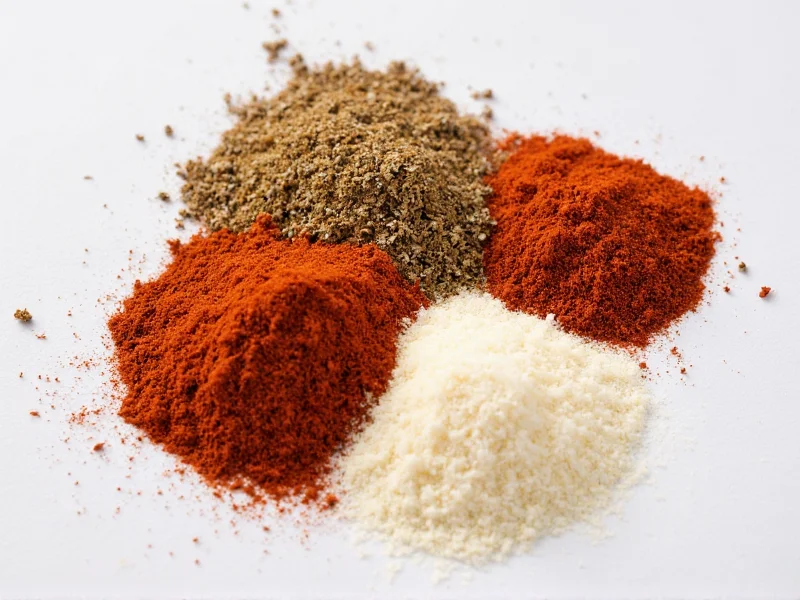Creating exceptional sausage begins with understanding spice selection and application. Whether you're crafting breakfast links, bratwurst, or chorizo, the right spice blend transforms simple meat into culinary art. This guide provides professional insights for both home cooks and charcuterie enthusiasts seeking authentic flavor profiles.
Understanding Sausage Spice Fundamentals
Spices serve multiple functions in sausage beyond flavor enhancement. They contribute to preservation, color development, and texture. The fat content in sausage (typically 20-30%) acts as a carrier for fat-soluble flavor compounds, making proper spice selection critical. Unlike other cooking applications, sausage spices must withstand processing, casing, and often smoking or cooking.
Essential Spices for Different Sausage Categories
While regional variations exist, certain spices form the foundation of most sausage blends. Understanding these core ingredients helps you create authentic flavors or develop your own signature blends.
| Sausage Type | Signature Spices | Distinctive Flavor Notes |
|---|---|---|
| Italian | Fennel seed, red pepper flakes, garlic | Sweet anise notes with balanced heat |
| German Bratwurst | Marjoram, nutmeg, white pepper | Earthy warmth with subtle sweetness |
| Breakfast Sausage | Sage, thyme, red pepper | Herbaceous with mild heat |
| Chorizo | Smoked paprika, cumin, oregano | Smoky depth with earthy complexity |
| Andouille | Cayenne, black pepper, thyme | Intense heat with herbal undertones |
Mastering Spice Ratios and Measurements
Professional charcutiers measure spices by weight rather than volume for consistent results. The standard spice-to-meat ratio ranges from 1-3% of the total meat weight. Exceeding 3% can create overpowering flavors and potential bitterness from certain spices.
For precise measurements, use this professional guideline: 1.5-2.5% spice blend by meat weight. For example, with 5 pounds (2.27 kg) of meat:
- Total spice blend: 1.2-2.1 ounces (34-60 grams)
- Individual spices: Adjust proportions within the blend
- Garlic: Maximum 1% of meat weight to prevent rancidity
When developing your own blends, start with established ratios before experimenting. Traditional sausage spice combinations evolved through generations of refinement for balanced flavor profiles.
Fresh vs. Dried Spices: Critical Considerations
Dried spices generally work better in sausage production than fresh herbs for several reasons:
- Consistency - Dried spices provide uniform flavor distribution
- Moisture control - Fresh herbs introduce excess water affecting texture
- Shelf stability - Dried spices maintain potency during curing
- Processing tolerance - Withstand grinding and mixing without degradation
When using garlic, many professionals prefer granulated or powdered forms rather than fresh to prevent botulism risks in cured products. If using fresh garlic, process immediately before cooking and never in cured sausages.
Avoiding Common Spice Mistakes
Even experienced sausage makers encounter spice-related issues. Understanding these pitfalls ensures better results:
- Overpowering single spices - Balance is key; no single spice should dominate
- Inconsistent grinding - Use appropriate grind size (fine for fresh sausages, coarse for smoked)
- Poor spice storage - Spices lose potency within 6-12 months; store in airtight containers
- Incorrect measurement - Always weigh spices rather than using volume measurements
- Adding spices to warm meat - Mix spices into cold meat (below 40°F/4°C) to prevent fat smearing
Advanced Spice Techniques for Artisan Sausage
Professional sausage makers employ several advanced techniques to maximize flavor development:
- Dry blooming - Toast whole spices before grinding to enhance flavor compounds
- Alcohol infusion - Steep spices in spirits like bourbon or wine to extract additional flavor notes
- Layered seasoning - Add delicate spices after initial mixing to preserve volatile compounds
- Temperature-controlled resting - Allow seasoned meat to rest 24-48 hours before casing for flavor integration
For traditional European-style sausages, consider using natural curing agents like celery powder instead of commercial cures. This provides nitrate conversion while maintaining clean ingredient labeling.
Storing and Maintaining Spice Quality
Proper spice storage directly impacts sausage flavor. Follow these guidelines:
- Store in airtight containers away from light and heat
- Label containers with purchase dates; replace after 12 months
- Buy whole spices and grind as needed for maximum potency
- Keep moisture-sensitive spices like paprika separate from humid environments
- Never store spices above stoves or near other heat sources
When developing your signature sausage blends, document each variation meticulously. Small adjustments in spice ratios create dramatically different flavor profiles. Professional charcutiers often maintain detailed logs of spice combinations, meat sources, and processing conditions to replicate successful batches.











 浙公网安备
33010002000092号
浙公网安备
33010002000092号 浙B2-20120091-4
浙B2-20120091-4